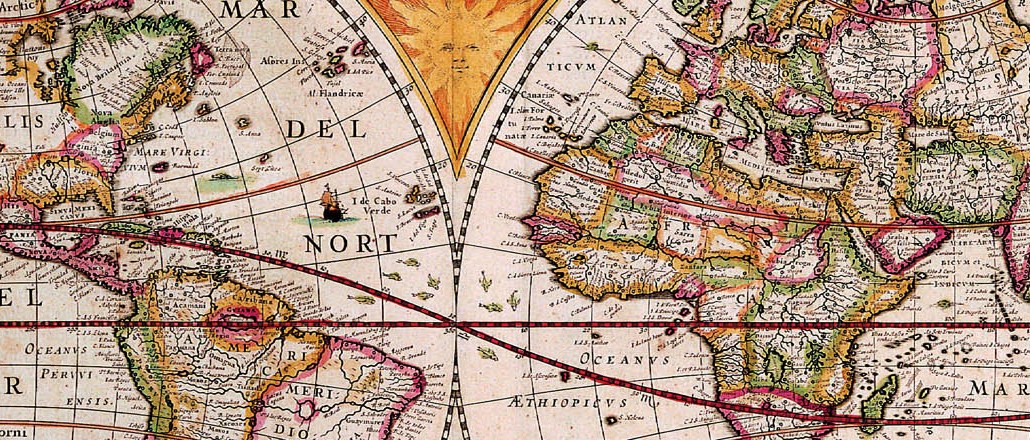Inside The New York Times’ international programmatic strategy

The New York Times is leaning on programmatic advertising to support its expansion across Europe and Asia. It has done so with a lean programmatic team: four in the U.S. who each look after a specific client vertical and a programmatic director in both London and Singapore — all of whom work closely with the direct sales team and report to global programmatic chief Sara Badler.
Hundreds of programmatic campaigns are running across the Europe, Latin America and Asia-Pacific markets, according to the publisher, though it won’t break out Europe-specific revenues. But it is programmatic direct deals, rather than open marketplace, that are setting the pace for growth, according to Badler. Globally, programmatic direct revenue has doubled over the last three months, compared to the first three months of this year, though she wouldn’t provide specific numbers. Working with advertisers to create custom programmatic partnerships, like private marketplaces or guaranteed deals, is driving much of that growth.
“Each quarter, we’re modifying and changing our programmatic products to meet client demands,” Badler said. “We get that one size doesn’t fit all; everything is customized and specific to client needs.”
Since Google introduced the capability, guaranteed deals with audience lists have gained momentum in the industry. The Times has tested the method, which ensures publishers only send impressions that match the buyer’s target audience, with U.S. clients over the last year. Badler said the aim is to extend the capability to European clients.
Catering to the different requirements and demands of advertisers in separate markets is tough. Although the execution of programmatic direct campaigns is automated, negotiating the terms requires a steady amount of face time, particularly in Europe, where the Times competes with other embedded domestic titles. Anne Bouttier, the Times’ London programmatic director, spends her time traveling to Germany, France and other major markets, building relationships with local advertisers.
“It is a challenge,” Badler said. “There are different budgets for different markets, and the German and French markets alone have different needs and types of buying. The clients are very specific in how they buy, and a lot of the agency trading desks are looking for ways in which they can buy for multiple advertisers in one deal or doing more audience guaranteed deals.”
Naturally, it helps having established U.S. advertising clients that have a global presence — though the publisher is not a shoo-in. Essence, for example, is a steady partner of the Times in the U.S. but has yet to work with the publisher in the U.K. That’s for a number of reasons. The scale factor is one barrier. Of course, the Times is a paywalled publisher, so comparing it to an open title like the Guardian may seem somewhat unfair. But for agency planners, it’s still a major factor.
“We need to be quite specific when using them internationally,” said Jason Jutla, senior activation director at Essence. “They have gone out to agencies more here and made it clear they’re doing direct programmatic deals, but from our side, planners don’t tend to include them when thinking about market-specific plans. They don’t have the scale or audiences we’ve needed so far.”
There is room for that to change, though. More clarity on how European audiences’ behaviors and tastes differ from the U.S. markets would be welcome — as would detail on social referral traffic on, for example, Trump-related stories versus people visiting nytimes.com directly to read articles, he added.
“Is there a domain-specific loyalty from European audiences? And if so, what can we then infer about their demographics and what they read? Do they have a political bias? Are those who read their articles via social [platforms] younger and a more politically activated audience?” That can help us narrow in on who their audience is and figure out how we can then try and influence them,” said Jutla.
For other global businesses, the brand-safe environment the Times guarantees is an easy trade-off for the international audience scale. That goes for luxury brand clients like Coty, which is running multiple programmatic campaigns with the Times internationally. The Times has always distanced itself from the “remnant” reputation of display programmatic advertising, positioning itself as a premium, transparent programmatic offering. All digital advertising is open to be traded programmatically and compete with direct sales, meaning CPMs remain high, and brands that value brand safety above all are willing to pay the higher prices.
“Working with publications like NYT creates comfort in the brand team that they’re going to be reaching the right type of audience in an environment that’s complementary to the stature of brands we’re working with,” said Anthony Rhind, chief operating officer of Beamly, Coty’s in-house digital ad agency. “Working with them gives us the confidence needed to pioneer new programmatic ways of working with the most prestigious brands because we know where the ads will be, and that means we can push forward a better kind of innovation.”
More in Media

Digiday Scorecard: Publishers rate Big Tech’s AI licensing deals
Digiday has compiled a scorecard grading AI platforms to make sense of the growing number of players in the AI content licensing market.

Publishers are hunting for AI prompt data — now they’re starting to get it from third-party companies
Publishers are finally gaining some visibility into AI search, as new prompt data tools crack open a black box.

Digiday+ Research: Publishers’ growing focus on video doesn’t translate to social platforms
Major publishers have made recent investments in vertical video, but that shift is not carrying over to social media platforms.








